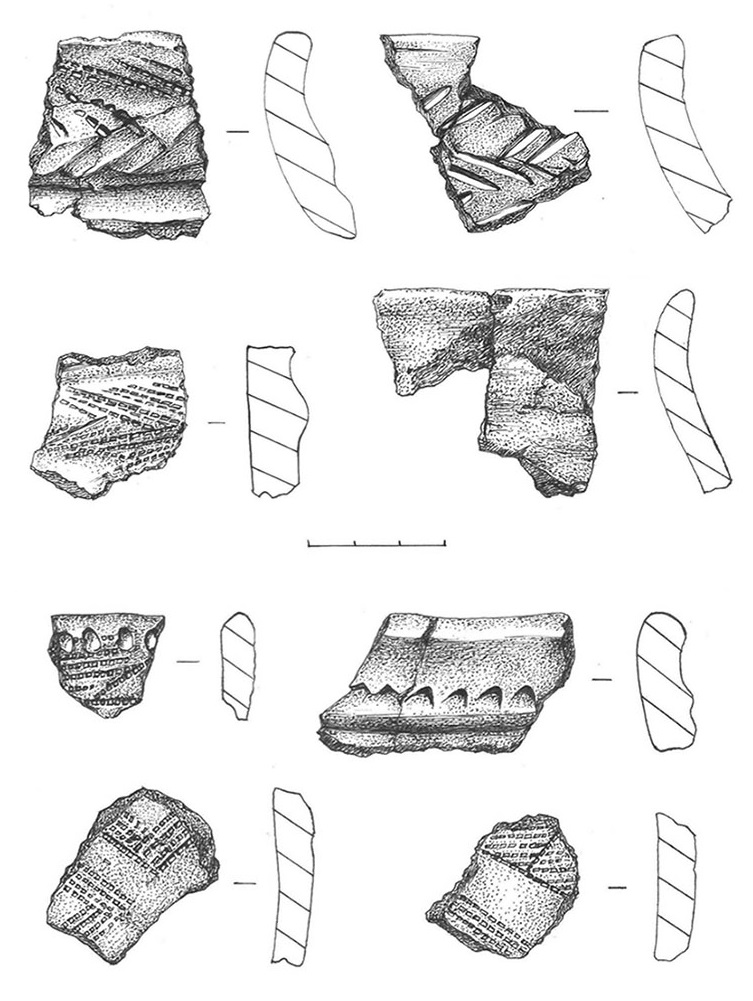“Few features were found in this area,” they wrote in a recent paper (archaeologists call buildings and walls features), “suggesting that metallurgical production may have been dispersed or occurred in less architecturally formalized spaces.” In other words, the bronzesmiths of ancient Semiyarka seem to have worked in the open air or in a scattering of small, less durable buildings that left no trace behind them. But they all seemed to be doing their jobs in the same area of the city.
Notice how the area where the artifacts were found extends beyond the visible outlines of ancient buildings.
Radivojevic et al. 2025
Fragments of broken ceramics found in Semiyarka
Radivojevic et al. 2025
Connections between nomads and city dwellers
To the east of the earthworks lies a vast area with no trace of walls or foundations underground, but with a scattering of ancient artifacts half-buried in grass. Long-forgotten objects may mark sites of “more ephemeral, perhaps seasonal, habitation,” Radivojevic and her colleagues suggested in a recent paper.
This area makes up most of the city's approximately 140 hectares, raising questions about how many people lived here permanently, how many people stopped here on trade routes or pastoral migrations, and what their relationships were.
Several broken shards indicate that the sedentary townspeople of Semiyarka regularly traded with their more mobile neighbors on the steppe.
In the city, most of the ceramics correspond to the style of the inhabitants of Alekseevka-Sargara. But some of the clay shards excavated at Semiyarka are clearly the work of the nomadic Cherkaskol potters who lived on this same wide sea of grass from about 1600 to 1250 BC. It makes sense that they traded with the people in the city.
Along the nearby Irtysh River, archaeologists have discovered faint traces of several small sites built around the same time as Semiyarka's heyday, and to the north of the city are two burial mounds. Archaeologists will have to dig deeper, literally and figuratively, to understand how Semiyarka fit into the ancient landscape.
The city has a lot to tell not only about itself, but also about the entire vast open steppe and its people.
Antiquity, 2025. DOI: 10.15184/aqy.2025.10244 (About DOI).








